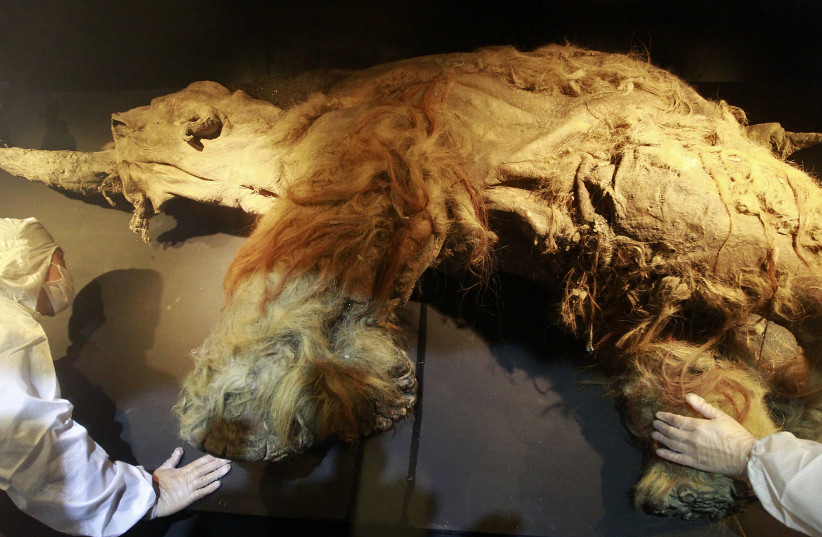What makes a mammoth a woolly mammoth? – study

This ground-breaking study is the first to use a large sample size, enabling the researchers to look at adaptive evolution, not just genetic evolution.
Mammoths evolved, over 700,000 years, to be woollier and have smaller ears, a new study has found.
A new peer-reviewed study, published in the Journal of Current Biology, compared the genomes of woolly mammoths with elephants and found that the woolly mammoth’s wool coats and fat deposits were genetically encoded in the earliest of the species. However, the species’ other traits evolved over 700,000 years of existence.
“We wanted to know what makes a mammoth a woolly mammoth,” says paleogeneticist and first author David Díez-del-Molino of the Center for Palaeogenetics in Stockholm. “Woolly mammoths have some very characteristic morphological features, like their thick fur and small ears, that you obviously expect based on what frozen specimens look like, but there are also many other adaptations like fat metabolism and cold perception that are not so evident because they’re at the molecular level.”
This ground-breaking study is the first to use a large sample size, enabling the researchers to look at adaptive evolution instead of just genetic evolution.
Genetic mutations in woolly mammoths
Through comparing the genomes of 23 Siberian woolly mammoths with 28 modern-day Asian and African elephant genomes, the researchers discovered sixteen genomes that had not been previously sequenced.
“Having the Chukochya genome allowed us to identify a number of genes that evolved during the lifespan of the woolly mammoth as a species,” said senior author Love Dalén, professor of evolutionary genomics at the Center for Palaeogenetics in Stockholm. “This allows us to study evolution in real time, and we can say these specific mutations are unique to woolly mammoths, and they didn't exist in its ancestors.”
Some of the genetics that enabled the creatures to live in cold climates are shared by unrelated modern-day Arctic mammals.
“We found some highly evolved genes related to fat metabolism and storage that are also found in other Arctic species like reindeer and polar bears, which means there’s probably convergent evolution for these genes in cold-adapted mammals,” says Díez-del-Molino.
“We found that some of the genes that were previously thought to be special for woolly mammoths are actually variable between mammoths, which means they probably weren't as important,” added Díez-del-Molino.
The 700,000-year-old Chukochya genome shared 91.7% of the mutations that caused protein-coding changes in the more modern woolly mammoths. This means that thick fur, fat metabolism, and cold-perception abilities were likely present when the woolly mammoth first evolved as a unique species from the steppe mammoth.
“The very earliest woolly mammoths weren't fully evolved,” says Dalén “They possibly had larger ears, and their wool was different—perhaps less insulating and fluffy compared to later woolly mammoths.”
In the later evolved woolly mammoths, there were new immune mutations in T cell antigens. The authors believe that these mutations may have conferred enhanced cell-mediated immunity in response to emerging viruses and pathogens.
The researchers hope to collect future samples outside of Siberia.
“We showed a couple of years ago that there was gene flow between woolly mammoths and the ancestors of Colombian mammoths, so that’s something that we will need to account for because North American woolly mammoths might have been carrying non-woolly mammoth genes as well,” says Dalén.
Jerusalem Post Store
`; document.getElementById("linkPremium").innerHTML = cont; var divWithLink = document.getElementById("premium-link"); if (divWithLink !== null && divWithLink !== 'undefined') { divWithLink.style.border = "solid 1px #cb0f3e"; divWithLink.style.textAlign = "center"; divWithLink.style.marginBottom = "15px"; divWithLink.style.marginTop = "15px"; divWithLink.style.width = "100%"; divWithLink.style.backgroundColor = "#122952"; divWithLink.style.color = "#ffffff"; divWithLink.style.lineHeight = "1.5"; } } (function (v, i) { });

